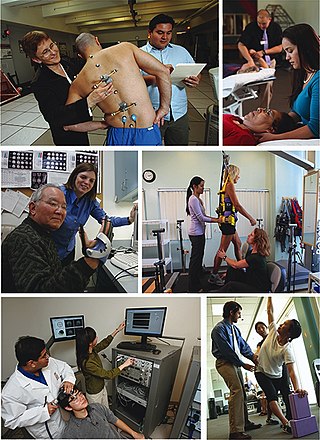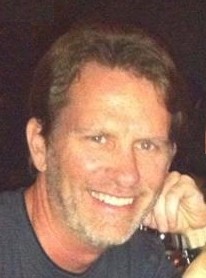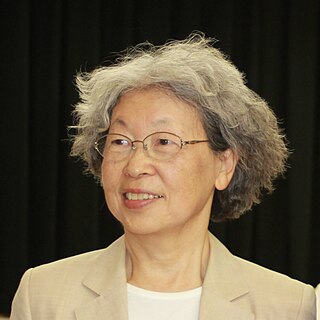Hemiparesis, or unilateral paresis, is weakness of one entire side of the body. Hemiplegia is, in its most severe form, complete paralysis of half of the body. Hemiparesis and hemiplegia can be caused by different medical conditions, including congenital causes, trauma, tumors, or stroke.

Physical therapy (PT), also known as physiotherapy, is one of the allied health professions. It is provided by physical therapists who promote, maintain, or restore health through physical examination, diagnosis, management, prognosis, patient education, physical intervention, rehabilitation, disease prevention, and health promotion. Physical therapists are known as physiotherapists in many countries.

Kinesiology is the scientific study of human body movement. Kinesiology addresses physiological, anatomical, biomechanical, pathological, neuropsychological principles and mechanisms of movement. Applications of kinesiology to human health include biomechanics and orthopedics; strength and conditioning; sport psychology; motor control; skill acquisition and motor learning; methods of rehabilitation, such as physical and occupational therapy; and sport and exercise physiology. Studies of human and animal motion include measures from motion tracking systems, electrophysiology of muscle and brain activity, various methods for monitoring physiological function, and other behavioral and cognitive research techniques.

The Florey Institute of Neuroscience and Mental Health, more commonly known as the Florey Institute, is an Australian medical research institute that undertakes clinical and applied research into treatments for brain and mind disorders and the cardiovascular system. The institute's areas of interest include Parkinson's disease, stroke, motor neurone disease, traumatic brain and spinal cord injury, addiction, epilepsy, multiple sclerosis, brain development in premature babies, Autism, Huntington's disease, depression, schizophrenia, brain function in health and disease, heart failure, and dementia.
Theresa A. Jones is a researcher and professor at the University of Texas at Austin and the Institute for Neuroscience. Her interests are in neural plasticity across the lifespan, motor skill learning, mechanisms of brain and behavioral adaptation to brain damage, and glial-neuronal interactions. Her research is on the brain changes following stroke, in particular rehabilitation strategies and the brain changes associated with them. She primarily tests rats and uses the Endothelin-1 stroke model. Her most recent work has expanded into the field of microstimulation mapping of the rat cortex.
Neurorehabilitation is a complex medical process which aims to aid recovery from a nervous system injury, and to minimize and/or compensate for any functional alterations resulting from it.

Physical therapy education varies greatly from country to country. Worldwide, physical therapy training ranges from basic work site education in hospitals and outpatient clinics to professional doctoral degree and masters programs.
Judith E. Deutsch, PT, PhD, FAPTA, is a professor of physical therapy in the Department of Rehabilitation & Movement Sciences at Rutgers University. She is also the director of the Research in Virtual Environments and Rehabilitation Sciences Lab.
Julie Bernhardt is an Australian physiotherapist and clinician scientist, a Principal Research Fellow and an NHMRC Senior Research Fellow and Clinical Head of the Stroke Division at the Florey Institute of Neuroscience and Mental Health, University of Melbourne. Bernhardt is Principal Investigator of the 'A Very Early Rehabilitation Trial' (AVERT) and a leader in the field of stroke recovery.
Jennie Louise Ponsford is an Australian neuroscience researcher at Monash University, Victoria who has a special interest in Traumatic Brain Injury (TBI). Jennie is a clinical neuropsychologist, whose work is focused on developing a deeper understanding of the negative consequences of TBI, particularly those related to fatigue, sleep disturbance, attentional problems, mood and behavioural disturbances, and the development of rehabilitation interventions to improve long term recovery and quality of life in individuals with TBI.
Mary Pauline Galea is an Australian physiotherapist and neuroscientist at University of Melbourne. She resides in Melbourne, Australia. Galea is a professorial fellow at the University of Melbourne's Department of Medicine at the Royal Melbourne Hospital and a Senior Principal Fellow in the Florey Institute of Neurosciences and Mental Health. She was foundation professor of clinical physiotherapy and director of the Rehabilitation Sciences Research Centre at the University of Melbourne and Austin Health. She is internationally recognised for her work in spinal cord injury and rehabilitative interventions.

Peter G. Levine was an American medical researcher, science educator, and authority on stroke recovery. He published articles in peer-reviewed journals on brain plasticity as it relates to stroke, with emphasis on modified constraint induced therapy, cortical reorganization, telerehabilitation, electrical stimulation, electromyography-triggered stimulation, mental practice, cortical plasticity, acquired brain injury, spasticity, sensation recovery, evidence-based practice, outcome measures, and others. His articles have been widely cited by the medical community. His 2013 book Stronger After Stroke is regarded as an authoritative guide for patients and therapists dealing with stroke and it has received numerous positive reviews, and has been translated into Indonesian, Japanese, and Korean. His seminars throughout the United States were described by one reviewer as "funny, entertaining, engaging, dynamic, well organized, passionate and lighthearted." Levine was a trainer of stroke-specific outcome measures for The Ohio State University; B.R.A.I.N. Lab. He was a researcher and co-director at the Neuromotor Recovery and Rehabilitation Laboratory at the University of Cincinnati College of Medicine. Before that, he was a researcher at the Human Performance & Motion Analysis Laboratory, which is the research arm of the Kessler Institute for Rehabilitation.

Rajiv Ratan is an Indian American academic, professor, administrator and scientist based in New York. He is the Burke Professor of Neurology and Neuroscience at Weill Cornell Medicine. Since 2003, he has served as the executive director of Burke Neurological Institute and as a member of the Council of Affiliated Deans of Weill Cornell Medicine.
The University of Alberta Faculty of Rehabilitation Medicine, located in Edmonton, Alberta, Canada, is home to North America's only free-standing faculty of rehabilitation medicine and is composed of three departments, 11 research groups, six student clinics and programs and five institutes and centres. It provides academic training in rehabilitation science, physical therapy, occupational therapy and speech-language pathology.
Elnora M. Gilfoyle is a retired American occupational therapist, researcher, educator, and university administrator. She worked at several hospitals before accepting a professorship at Colorado State University, later serving as Dean of the College of Applied Human Sciences and Provost/Academic Vice President at that university. She is also a past president of the American Occupational Therapy Association. With research interests in child development, developmental disabilities, and child abuse, she has led studies on the state and federal levels. The co-author of two books and many articles, she was inducted into the Colorado Women's Hall of Fame in 1996.
Richard W. Bohannon is an American physical therapist, clinician, and scholar. Since 2000, he has served as Principal of Physical Therapy Consultants in North Carolina.
Stephen E. Nadeau is an American behavioral neurologist, researcher and academician. He is a Professor of Neurology at the University of Florida College of Medicine. He is also the Associate Chief of Staff for Research at the Malcolm Randall Department of Veterans Affairs Medical Center.
Janice Jennifer Eng is a professor in the University of British Columbia's Department of Physical Therapy and Canada Research Chair in Neurological Rehabilitation.

Noriko Kamakura:22 is a practitioner, researcher, and academic leader in occupational therapy. She was in the initial generation of people who became occupational therapists in Japan. She greatly influenced how occupational therapy developed in that country, contributing especially in clinical approaches to persons with central nervous disorders of executive functions. In addition, she explored function of the hand in enough detail to develop a system of taxonomies that can account for the vast majority of postures and movements of the hand.

Diane Louise Damiano is an American biomedical scientist and physical therapist specializing in physical medicine and rehabilitation approaches in children with cerebral palsy. She is chief of the functional and applied biomechanics section at the National Institutes of Health Clinical Center. Damiano has served as president of the Clinical Gait and Movement Analysis Society and the American Academy for Cerebral Palsy and Developmental Medicine.








